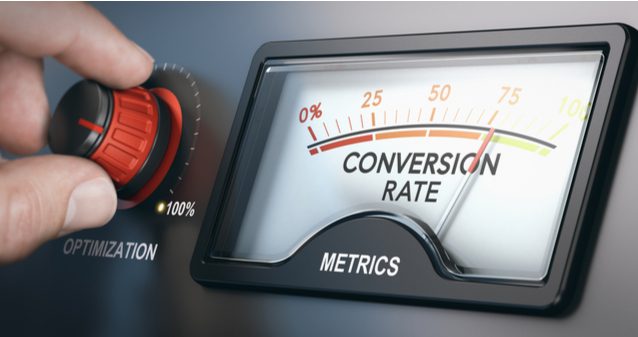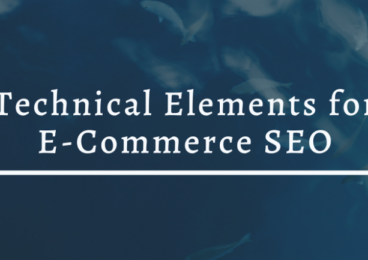 Reading Time: 4 minutes
Reading Time: 4 minutesWhen focusing on improving website performance, you cannot overlook conversion rate optimization (CRO) and search engine optimization (SEO). The former is a system for increasing the number of page visitors that are then “converted” into customers by performing a desired action such as subscribing to a newsletter, purchasing an item, leaving a review, etc. Exactly how you count conversions varies depending on what sort of site you have and what kind of services you seek to provide. The latter is the process of increasing the number of visitors that arrive on your site by way of search engine results. This ensures that more people are drawn to your site.
And, the more people that discover your page, the more likely you are to get an increase in conversions as well.
Claim Your Free SEO Consultation
How to Leverage CRO and SEO for Your Business
Both CRO and SEO are very much intertwined. Working to improve one can lead to improvements in the other. But it’s not just good SEO that can lead to better conversion rates. In actuality, most of the steps involved in conversion rate optimization result in improved SEO figures. After all, SEO is not just about using the right keywords to make your website more discoverable. There are many factors that contribute to Google’s search engine algorithm when it comes to listing search results, and working on your conversion rates can have a direct impact on how that algorithm ranks your site.
Here, we’ll be discussing 3 things you can do to improve your conversion rates and your SEO simultaneously.
- Improve page load times. To clarify, this refers to the amount of time it takes to fully display the content of a specific page. Given that users expect pages to load quickly so they can access the content they need, Google’s algorithm takes this factor into account when ranking search results. Thus, pages that load slower will have poor SEO. Slow page load times are also likely to make visitors less likely to stay on your site, affecting your conversion rates as well. Even a tiny three second delay can be enough for most visitors to click away from your page, increasing your bounce rate, and a high bounce rate is going to have a negative impact on your SEO.
As stated earlier, it’s all connected. To assess if your site is in need of improvement, you can utilize Google’s PageSpeed Insights. Depending on the results, you may decide some changes are necessary to increase your speed. If that is the case, there are a few ways to accomplish this. Reducing file sizes is a great place to start. You can do this by compressing images and files and combing through your code to remove any sections that ultimately were left unused, in addition to any unnecessary characters. Browser caching is another simple tool to improve page load times.
- Create longer content. Determining the ideal content length goes a long way to helping your conversion rates and SEO. In general the longer a user spends reading your content, the higher the engagement metrics increase, so longer content is preferable to simply create a large number of short posts to bulk up your site. The key is to be sure the content is quality to encourage the user to read it thoroughly. If you can successfully hook a visitor with a post, and continue to hold their interest throughout, then your metrics will fare much better as a result. Formatting can be a helpful tool to break up long posts in such a way as to make them less intimidating.
The intentional use of bullet points and multiple different headers organizes the information into more digestible, “bite-sized” pieces, while still centering around one specific topic.
- Upload videos. Of course, it’s not just about the length of your content, but about the kind of content you produce. Visuals are truly a powerful tool, and while it’s true that long, engaging text posts help hook in visitors, a video can accomplish the same thing, getting users to spend more time on your site and sending higher quality signals to search engines.
It’s also important to note that unlike text, the videos don’t need to be all that long. In fact, the recommended length of a video is a mere 3 to 5 minutes, though to ensure viewer retention you should include a powerful, attention-grabbing introduction within the first 10 seconds. This means that with the proper team, you should be able to create a good amount of content in a short amount of time. Videos tagged with the proper schema can also enhance the search result listing, increasing the click-through rate to the page. You’ll want to select a good thumbnail for your video as well. Though this may seem like a small detail, including a thumbnail that is distinct, well-designed, and easy to read can increase engagement by a large percentage.
Boost Your SEO By Using These Tips
By focusing on these three simple areas, you can make significant improvements on your conversion rates and great strides with your SEO. Reducing load time helps prevent new visitors from leaving before they even have the chance to review your content and filling your site with engaging material is a sure way to keep those visitors engaged.
With a combination of long text posts and fun or educational videos, you can ensure you’re making the best impression. Those viewers are more likely to return for more content, and the excess time spent interacting with your site and clicking through your posts will give your SEO a boost as well. Once that’s taken care of, you can really stop worrying about drawing people in, and start focusing on making long lasting improvements to your site and building up your online presence.
At Vizion Interactive, we have the expertise, experience, and enthusiasm to get results and keep clients happy! Learn more about how our CRO services can increase sales and boost your ROI. But don’t just take our word for it, check out what our clients have to say, along with our case studies.




